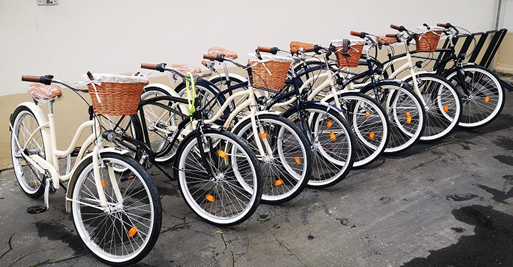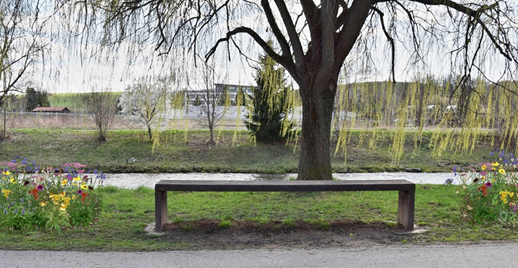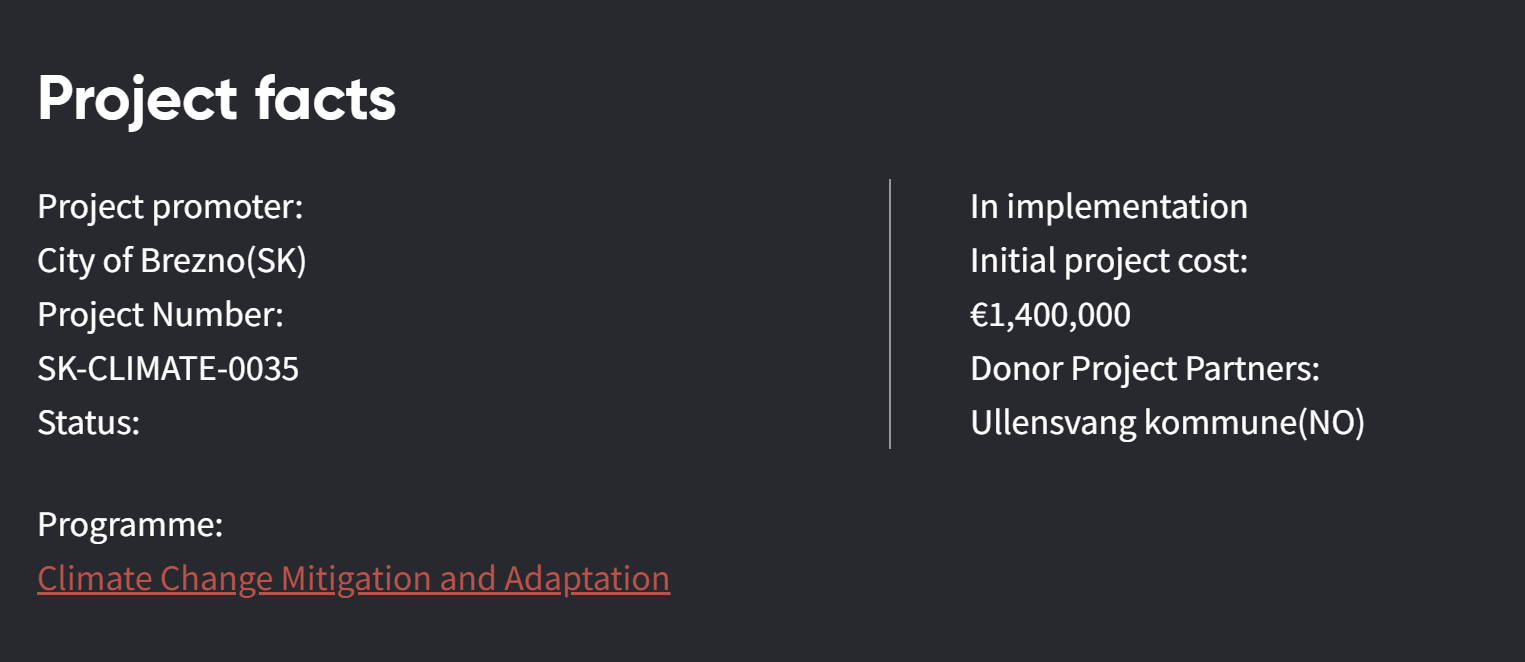The impact of these choices resonates far beyond city limits, demonstrating that the collective efforts of urban communities hold the potential to inspire global change and shape a more sustainable world for generations to come.

Leading by example
In an effort to combat the pressing challenges of climate change and its impact on the environment and society, the EEA and Norway Grants are especially excited to be part of a transformative project in the city of Brezno. This project aims to implement a range of measures that will promote climate change mitigation and adaptation, fostering a sustainable and resilient community for the future. With the involvement of the Ullensvang commune as a Donor Project Partner, the city of Brezno is set to become a shining example of environmentally responsible and humanitarian initiatives.
The exciting initiative in the city of Brezno is a result of a special programme entitled “Action plans for mitigation and adaptation implemented by local authorities in urban areas”. It is organised by the Slovak Ministry of Environment and has more than 2.6 million euros allocated to it. This programme aims to support projects that help cities adapt to and tackle climate change, and three cities were chosen to receive funding. Brezno was selected for its innovative approach to creating action plans that will make the city more resilient. This kickstarted the project in Brezno: taking 7 specific steps towards making the city better prepared for climate challenges and ensuring a greener, more sustainable and enjoyable life for everyone living there.
“The Norway Grants help us put into practice projects focused on climate resilience. Thanks to this, we were able to implement several projects aimed at protecting the environment, improving the lives of our inhabitants” - Tomáš Abel, Mayor of Brezno - Slovakia
Let's dive into the 7 steps that are part of this inspiring venture!
1. Developing the action plan for climate change mitigation and adaptation:
The first critical step of the project is to devise a comprehensive action plan. This involves analysing the existing climate conditions, conducting a risk assessment, and evaluating the territory's vulnerability to climate change. By understanding these factors, the project is able to create a robust framework to address and counteract climate-related challenges effectively.
2. Investments in sustainable buildings:
It is important to underline the significant impact buildings have on energy consumption and emissions. This is why selected kindergartens are undergoing energy efficiency improvements. Furthermore, exterior vertical greenery and green walls on container stands are being installed to enhance urban green spaces and combat the heat island effect. This refers to the phenomenon where urban areas experience higher temperatures than their rural surroundings due to human activities, dark surfaces, and limited vegetation, resulting in adverse environmental impacts. An additional advantage is that converting asphalt pitches to bright areas create sustainable recreational spaces that promote well-being and environmental harmony.
“We have new walls, new windows, and the heating system was changed. We have rain water collection. The children are happier because they have better comfort inside, and they are raised in greener environments.” - Eva Bamburova, Kindergarten teacher, Brezno, Slovakia
3. Embracing energy saving and smart solutions:
To reduce the city's carbon footprint, the project harnesses renewable energy sources. Solar lighting installations in parks illuminate public spaces while relying on clean energy. Additionally, air quality sensors and a combined sensor of meteorological parameters provide valuable data for monitoring air quality. An innovative mobile application is being launched in parallel, enabling real-time tracking of air quality across the town.
4. Sustainable transport options:
Recognising the role of transportation in carbon emissions, the project promotes eco-friendly alternatives. Such alternatives refer to environmentally conscious choices that have a reduced negative impact on the environment compared to conventional options, promoting sustainability and ecological balance. E-cars and e-bicycles are provided for Town Hall employees, encouraging the adoption of green mobility solutions within the community.

5. Integrating green and blue infrastructure:
Nature-based solutions are essential for promoting biodiversity and ecological balance. The project is introducing various green and blue infrastructure measures. While green infrastructure involves integrating natural elements like green spaces into urban environments to enhance biodiversity and provide ecosystem services, blue infrastructure focuses on managing water sustainably through features like rain gardens, ponds, and wetlands.
The project entails creating a green island on a crossroad, planting meadow communities, installing insect houses, and placing flower pots around the city. These initiatives foster a healthier environment and a thriving ecosystem within the city, enabling nature to be part of citizens’ everyday life.
6. Strengthening waste and water management:
The project envisions introducing biodegradable waste collection from complex housing construction, reducing the environmental impact of waste disposal. Furthermore, a bioretention system, a sustainable water management approach, with functional vegetation is being established to catch and drain rainwater from slopes, contributing to efficient water management and flood prevention.

7. Educating and inspiring change:
To achieve lasting impacts, the project places emphasis on education and community engagement. A comprehensive education program is being developed for primary and secondary school students, focusing on climate change and its consequences. An interactive "permanent exhibition exposition" also educates the public on the implementation of measures to reduce CO2 emissions.
The EEA and Norway Grants funded climate change mitigation and adaptation project in the city of Brezno stands as a beacon of hope for sustainable living and environmental responsibility. With an integrated approach that encompasses various activities, this initiative aims to create a more resilient and greener community. By collaborating with the Ullensvang commune and engaging the general public, the project seeks to inspire positive change and empower the city of Brezno in its journey towards a sustainable future. Together, we can build a better world for generations to come.

This project falls under the overarching theme of 'Climate Change,' addressing the urgent need for climate resilience and sustainability. With the generous support of €1,400,000.00 from the EEA and Norway Grants, the city of Brezno is empowered to implement a comprehensive set of measures and activities over the course of three years, from 12th May 2021 to 30th April 2024. As the city of Brezno takes significant strides towards a more climate-resilient future, it sets a remarkable example for cities worldwide.


This article is part of the #OurStories campaign. The campaign looks at the vast variety of inspirational stories of projects and connections made possible through the EEA and Norway Grants. We will be sharing these stories on this website through articles and videos published on social media and Youtube. More importantly, #OurStories is a platform for the thousands of project participants who have in one way or the other been involved in projects made possible by the EEA and Norway Grants.
Follow us on social media(@EEANorwayGrants) to stay up-to-date on #OurStories and find more stories here.
